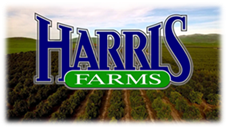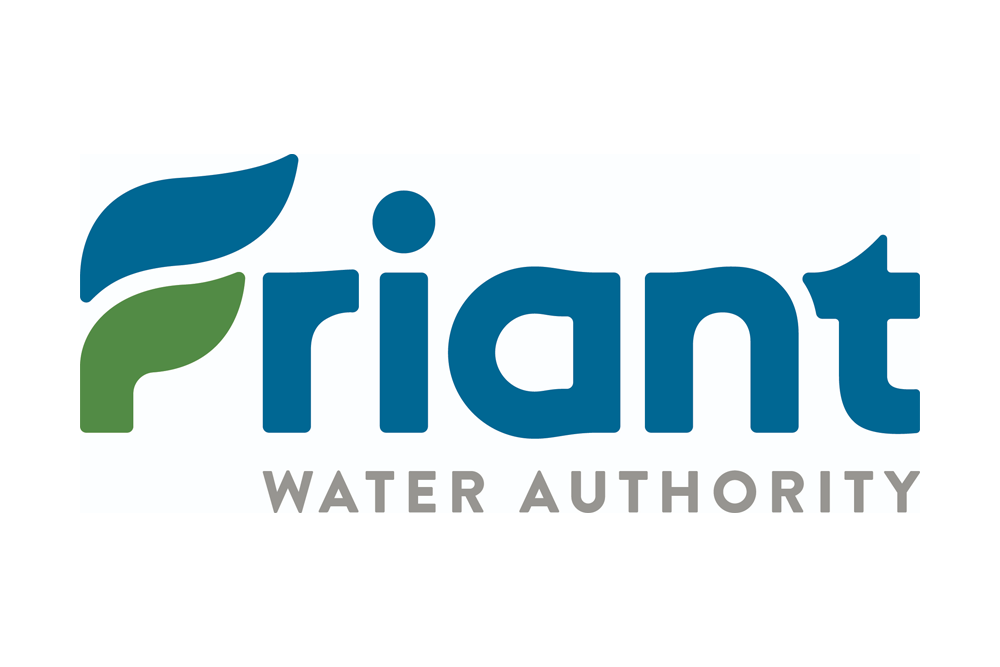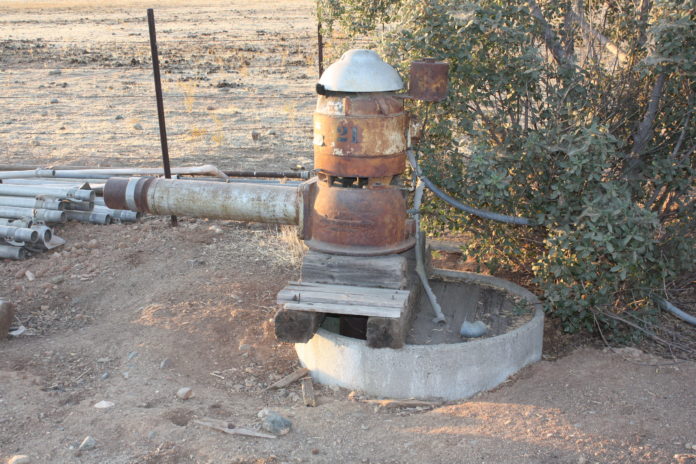 Penalties Set for Exceeding Allocated Water Amounts
Penalties Set for Exceeding Allocated Water Amounts
By Joel Hastings
The Madera County Board of Supervisors met as the GSAs board of directors on Feb. 9 as a part of their second regular meeting of the month, as scheduled. These GSAs cover the so-called “white areas” that lie outside the irrigation districts and Madera City. The GSA meeting began soon after the scheduled 10:30 a.m. announced time. The meeting was held in person with four supervisors present and Supervisor Tom Wheeler remote. A webcast video was available for interested members of the public, including this reporter.
The focus was an update on work by the Agencies with projects and management actions and other GSP items. Stephanie Anagnoson, Madera County Director of Water and Natural Resources provided the update on outreach, GSP comments and implementation. In her PowerPoint presentation, she explained that the opportunity for public comment on the Subbasin’s Groundwater Sustainability Plan closed on Dec. 23, 2020. Seven organizations and three individuals has provided comment and she listed them, including the U.S. Bureau of Reclamation, Audubon California, The Nature Conservancy, National Marine Fisheries Service and more locally, the Leadership Counsel for Justice and Accountability. She explained that in addition to reviewing all comments, responses would likely be prepared.
Anagnoson went on to identify the four meetings that had been held including Water Market Simulation, SALC (land repurposing) grant webinar and the Satellite Technology for Evapotranspiration, all held in January, with a recharge study webinar held the previous week on February 4 which identified, public, private and hybrid options for setting land aside. She also detailed the emails, newsletters, public notices and community meetings that had been held. She said the challenge with outreach is find the right amount… not too much that detracts from action versus not enough so that affected landowners don’t know what’s happening.
She went on to explain that right now, the official Advisory Committee does not exist since it had submitted its final report in December. She said this work was successful, but as an official committee, it had been highly formal. She recommends a work group structure that is less formal but can go deeply into allocations and rate studies.
She noted that under SGMA, the GSAs have the ability to assess penalties against property owners who use more water than allocated. Penalties will need to be established under ordinance and options could include either or both:
-a civil penalty up to $500 / AF extracted in excess of any amount the person is authorized to extract.
-a civil penalty not to exceed $1000 plus $100 for each additional day after 30-days of notice.
The GSA will be assuming that all irrigated acres “in” and will have access to allocations. To “opt-out” requires a contract with the GSA for each parcel stating you will not access sustainable yield over the next five years; access sustainable yield this year; and access transitional water this year.
The GSA will monitor the use and non-use using satellite technology, with the penalties noted above determined at the end of the calendar year or the water year.
After her slide presentation, Anagnoson invited comments on concept of a more informal working group and the penalties she had detailed.
Supervisor David Rogers asked about accuracy of ET info by satellite, considering various crops, soil types and soil amendments. The response was that measurements of rainfall and pumping accuracy is typically within 10 percent (SEBAL). Rogers asked if 10 percent overage of pumping could be a “grace” amount before penalties would be imposed. The reply was that that amount could be included. Anagnoson reaffirmed that satellite technology is proven to be the most accurate measurement even compared with meters.
technology is proven to be the most accurate measurement even compared with meters.
On the topic of a working group to act as an advisory body, Supervisor Brett Frazier agreed that the informality allowed might be better.
Chairman Rob Poythress agreed that a working group approach is the way to go forward without the rigidity of the committee structure. He said he liked the penalty approach and amounts. He said he agreed with an aggressive penalty because of the costs of over- drafting imposed on those who do follow the rules, who have to dig deeper wells or find alternative water.
drafting imposed on those who do follow the rules, who have to dig deeper wells or find alternative water.
Supervisor Wheeler agreed it’s high time to move forward. There are farmers out there who will be reacting but the whole economy is dependent on adequate water for everyone. Frazier agreed with the penalty amounts, too.
There was a little more discussion about the penalties and how much people pay for water.
Supervisor Rogers asked about ET satellite measurement on vacant land with weeds or miscellaneous non-irrigated acreage as well has the habitat for wildlife and plants on farm properties.
“We don’t want to penalize farmers for habitat,” he said.
Anagnoson said she would do some research but that she doesn’t think it involves very much water consumption. There are 90,000 acres in Madera Subbasin with plantings and rangeland but not irrigated. She confirmed non-irrigated land is not measured and therefore would not be subject to penalties.
At the conclusion of this discussion, Chair Poythress thanked Anagnoson for her continuing work and with that the meeting ended at 11:11 a.m. There were no public comments at any point.
DISCLAIMER OF RESPONSIBILITY; Waterwrights strives to provide clients with the most complete, up-to-date, and accurate information available. Nevertheless, Waterwrights does not serve as a guarantor of the accuracy or completeness of the information provided, and specifically disclaims any and all responsibility for information that is not accurate, up-to-date, or complete. Waterwrights’ clients therefore rely on the accuracy, completeness and timeliness of information from Waterwrights entirely at their own risk. The opinions expressed in this report are those of the author and do not represent any advertisers or third parties.
ALL RIGHTS RESERVED. Copyright 2021 by WaterWrights.net
Madera County is comprised of three subbasins, designated by the CA Department of Water Resources as critically overdrafted, and “high priority”: (1) the Chowchilla Subbasin; (2) the Madera Subbasin; and (3) a portion of the Delta-Mendota Subbasin. Each of these subbasins submitted a Groundwater Sustainability Plan (GSP) by January 31, 2020. These subbasins are required to achieve “sustainability” by the year 2040. The method by which sustainability will be achieved will be illustrated in the GSP, which was be drafted in partnership by the irrigation district, water districts, cities and Madera County. DWR #5-022.6
The Madera County Groundwater Sustainability Agency (GSA) is administered by the Madera County Department of Water and Natural Resources: Stephanie Anagnoson, Director, 200 W. Fourth Street, Madera, CA 93637, (559) 675-7703 x. 2265 or (559) 675-6573
The GSA Advisory Committee Members for 2020 are as followed (organized by name, subbasin, and representational group): Albert Guravage, Non-Permanent Ag- Alternate, Al Solis, Residential- Alternate, Ben Pitman, Livestock- Alternate, Bryant Elkins, Madera -Non-Permanent Ag, Clay Daulton- Residential, Clay Haynes- At Large, Devin Aviles, Madera- Permanent Ag, Darcy Volt- Livestock, Greg Hooker, Non-Permanent Ag- Alternate, James Unit, Permanent Ag- Alternate, Jared Samarin- Delta-Mendota, Jay Quick, Residential- Alternate, Jerry Kazynski- Residential, Jim Maxwell, Chowchilla- Permanent Ag, Karun Samran, Permanent Ag- Alternate, Larkin Harman, Chowchilla- Non-Permanent Ag, Leadership Council, DAC- Alternate, Mike DeLeGuerra, At Large- Alternate, Sam Lopes, Delta-Mendota- Alternate, Self-Help, DAC- Alternate, Teresa Mendoza- DAC, Vicki Ortiz- DAC


































